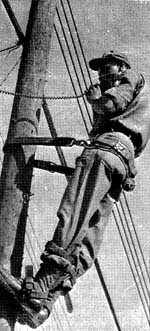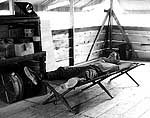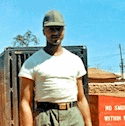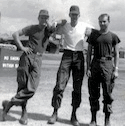~ 720th Military Police Battalion Vietnam History Project ~ |
|
|
|
From the Orderly Room field phone on Long Binh Post to the POW and convoy escorts, outpost's, river and ambush patrol's, they were ultimately responsible for the installation, repair and maintenance of all communications equipment assets that linked daily operations.
The Battalion Headquarters Detachment and each Company had a Commo Shop. All would coordinate their inventory, activities, and manpower to benefit the whole. Their general MOS Army Signal Corps Branch technical training was received at Fort Gordon, Georgia, and many of the personnel were also further trained in specialty fields, especially those personnel that handled the maintenance, receiving and transmittal of encrypted secret communications. Because of their work with and daily access to the communications network, their personnel also required mandatory security background clearances as a basic requirement to perform those duties. The sensitive electronics communications equipment in the field was especially vulnerable to the harsh weather and constant bouncing and vibrations caused by the poor roadways and rough water on the river patrols. |
Regularly scheduled inspection and maintenance was a must and although the Commo Shops had an 8 to 4 daily schedule, they were available for callouts for emergency service replacement and repairs regardless of the time of day, the weather or threat of enemy activity. Field equipment inspection and repairs often took the members of the Commo Shop into the field to visit the remote detachments throughout III & IV Corps Tactical Zones and the Battalion Tactical Area Of Responsibility where the ability to communicate for the four Battalion Outpost's in An Xuan, Long Hung, An Hoa Hung, and Long Binh Tan was paramount to their operations and safety. Each detachment and outpost maintained field radio and land line communications with the Battalion Tactical Operations Center on Long Binh Post. The land lines that connected them were often cut by enemy forces, vandalized for their wire value, or damaged by the wind and wet weather. The weather related land line telephone wire disconnections or breaks were the easiest to repair, but always the hardest to locate. |
. |
1966 |
. |
1967 |
. |
1968 |
. |
1969 |
. |
. |
1970 |
. |
. |
1971 |
. |
. |
1972 |
. |
. |










